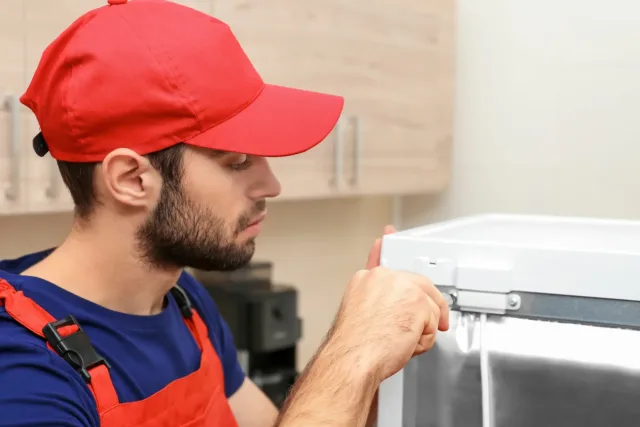
Is your Samsung fridge not keeping your food at the right temperature? It could be a problem with the temperature sensor. Don’t worry, our team of skilled technicians can diagnose and fix the issue in no time. Keep your food fresh and safe by calling us today.
What is a temperature sensor in a Samsung fridge?
A temperature sensor in a Samsung fridge is a device that measures the temperature inside the fridge and sends that information to the fridge’s control board. This allows the fridge to maintain a consistent temperature and keep your food fresh and safe. If the temperature sensor is not working properly, it can cause the fridge to run too cold or too warm, which can lead to spoiled food and other issues. If you suspect your Samsung fridge has a temperature sensor problem, it’s important to have it diagnosed and repaired by a professional technician.
How can a faulty temperature sensor affect the performance of the fridge?
A faulty temperature sensor in a Samsung fridge can cause a range of performance issues. If the sensor is reading the temperature incorrectly, it can cause the fridge to run too cold or too warm, which can lead to spoiled food and other issues. Additionally, a faulty sensor can cause the fridge to cycle on and off too frequently, which can lead to increased energy consumption and higher electricity bills. It’s important to have a professional technician diagnose and repair any temperature sensor issues to ensure your Samsung fridge is running smoothly and efficiently.
What are the signs of a faulty temperature sensor?
Some signs that your Samsung fridge may have a faulty temperature sensor include inconsistent temperatures inside the fridge, spoiled food, frost buildup in the freezer, and frequent cycling on and off. If you notice any of these issues, it’s important to call a professional technician to diagnose and repair the problem as soon as possible to prevent further damage to your fridge and ensure it’s running efficiently.
What is the process for repairing a faulty temperature sensor in a Samsung fridge?
The process for repairing a faulty temperature sensor in a Samsung fridge involves several steps. First, our experienced technicians will diagnose the problem by testing the sensor and checking for any other issues that may be contributing to the problem. Once the issue has been identified, we will replace the faulty sensor with a new one and test the fridge to ensure it’s running smoothly again. We use only genuine Samsung parts to ensure the highest quality repair. Our goal is to get your fridge back up and running as quickly as possible, so you can get back to enjoying fresh, properly chilled food.
Samsung approved repairers
A faulty fridge sensor can cause a world of problems, from spoiling all your food to unexpectedly high energy bills. If you think your fridge sensor is on the fritz, don’t panic! Replacing it is often a simple DIY task. Here’s how to know if it’s time to swap out your sensor and a step-by-step guide to doing it safely.
- Inconsistent Temperatures: Your fridge should maintain a steady temperature.If it’s fluctuating wildly, the temperature sensor might be the culprit.
- Food Spoiling Too Quickly: When food goes bad prematurely, it could mean your fridge isn’t actually as cold as it’s displaying. This is your sensor misreporting the temperature.
- Fridge Runs Nonstop: A bad sensor can make your fridge work overtime trying to hit a target temperature. If it’s running constantly, check the sensor.
- Ice Buildup: Too much frost or ice forming on freezer walls or food can mean the sensor isn’t accurately relaying temperatures.
- Error Codes: Some newer fridges will display error codes directly related to sensor malfunctions. Consult your manual for code meanings
DIY Guide: Replace Your Fridge Sensor
Step 1:
Unplug your fridge for safety.Step 2:
Locate the sensor (consult your owner's manual)Step 3:
Remove the old sensor carefully, noting wiring or clipsStep 4:
Install the new sensor, matching the previous configuration.Step 5:
Plug your fridge back in and monitor for improvement.
